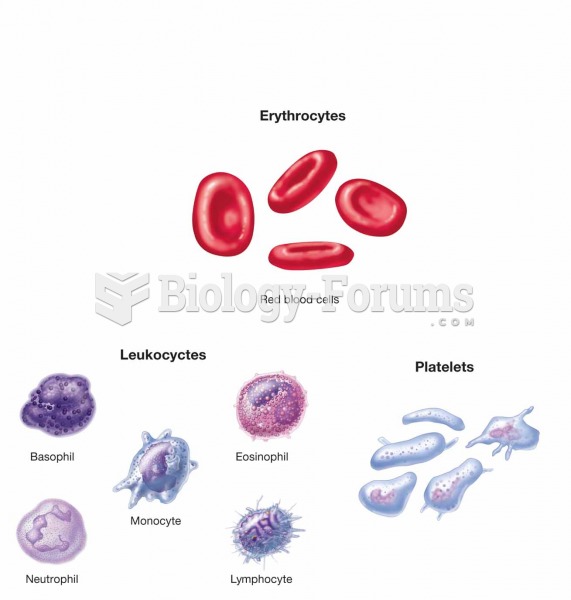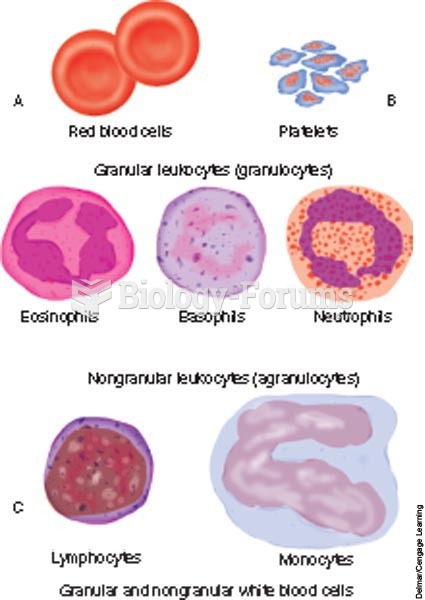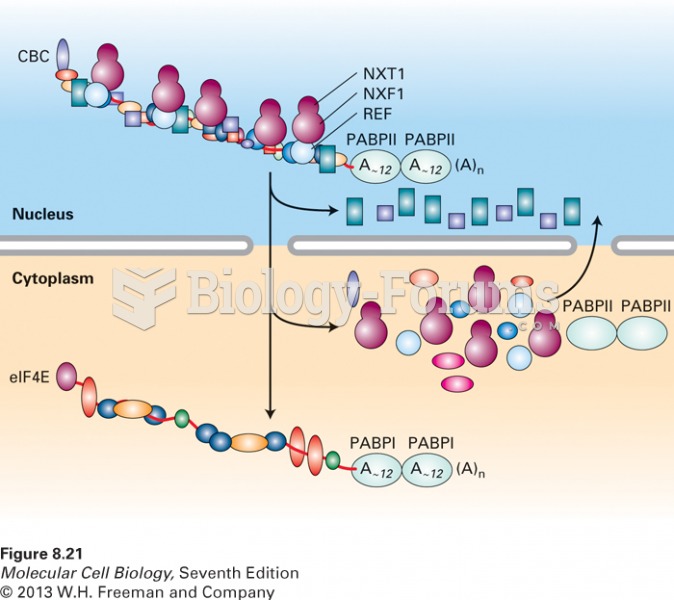|
|
|
This year, an estimated 1.4 million Americans will have a new or recurrent heart attack.
Essential fatty acids have been shown to be effective against ulcers, asthma, dental cavities, and skin disorders such as acne.
Common abbreviations that cause medication errors include U (unit), mg (milligram), QD (every day), SC (subcutaneous), TIW (three times per week), D/C (discharge or discontinue), HS (at bedtime or "hours of sleep"), cc (cubic centimeters), and AU (each ear).
About 3.2 billion people, nearly half the world population, are at risk for malaria. In 2015, there are about 214 million malaria cases and an estimated 438,000 malaria deaths.
Critical care patients are twice as likely to receive the wrong medication. Of these errors, 20% are life-threatening, and 42% require additional life-sustaining treatments.
 Formed elements of blood: erythrocytes, leukocytes (neutrophils, eosinophils, basophils, lymphocytes
Formed elements of blood: erythrocytes, leukocytes (neutrophils, eosinophils, basophils, lymphocytes
 The cells in blood; A, red blood cells (erythrocytes); B, platelets (thrombocytes); C, white blood c
The cells in blood; A, red blood cells (erythrocytes); B, platelets (thrombocytes); C, white blood c
 Growth cones. The cytoplasmic fingers (the filopodia) of growth cones seem to grope for the correct ...
Growth cones. The cytoplasmic fingers (the filopodia) of growth cones seem to grope for the correct ...




